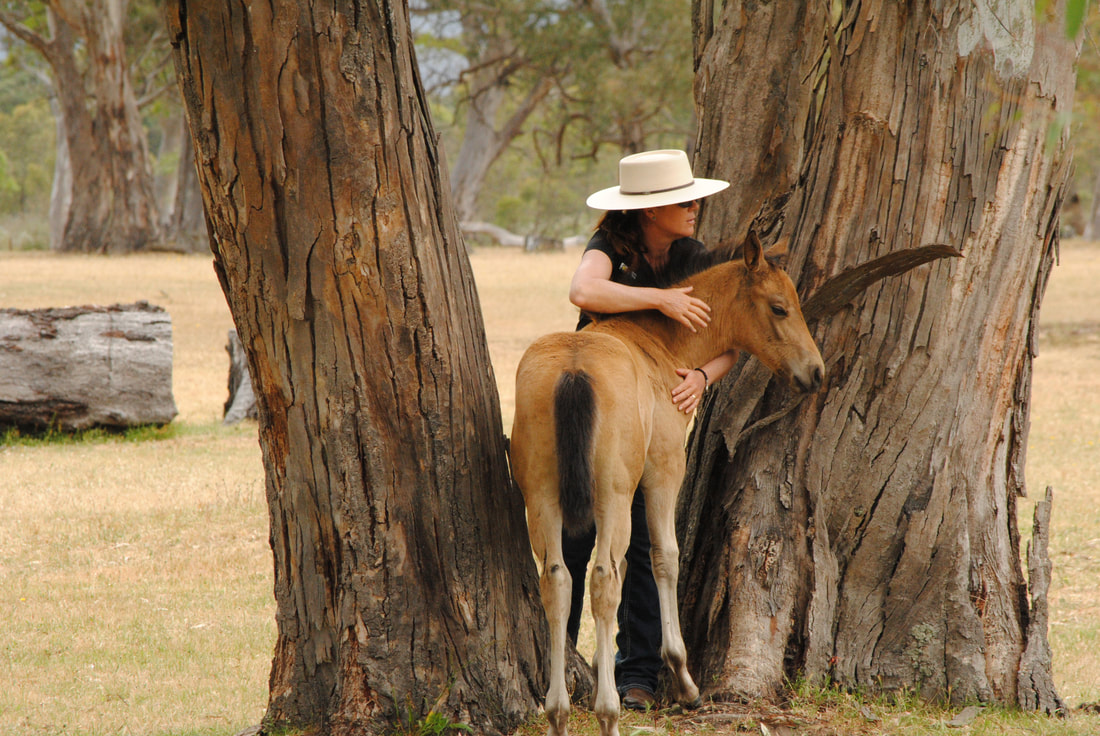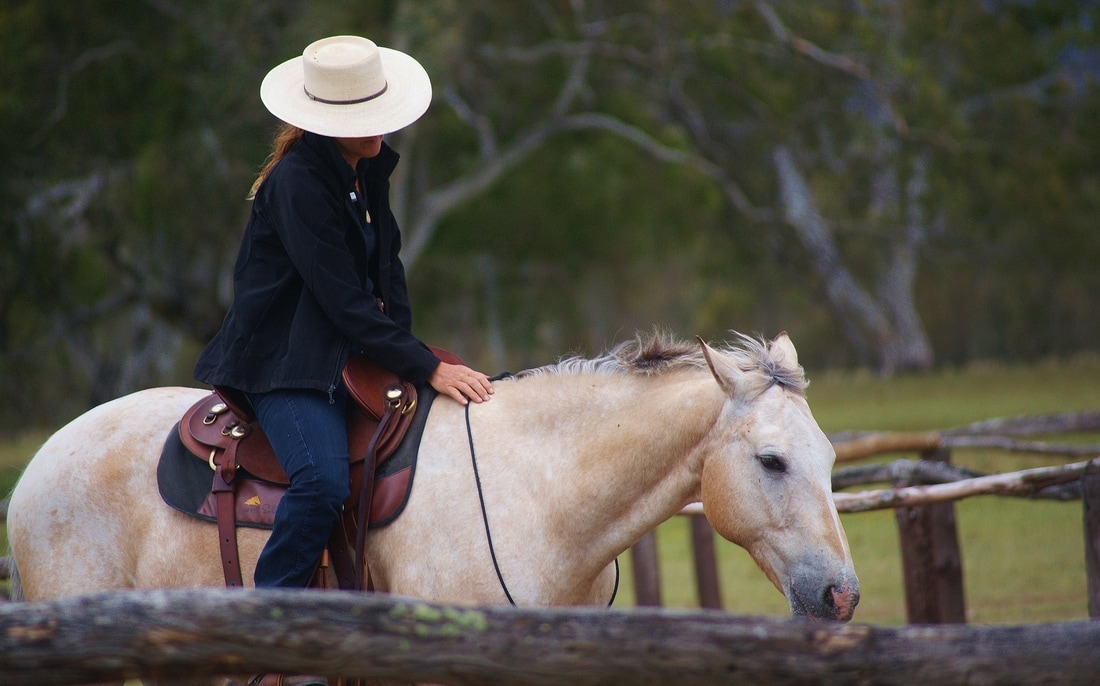|
Many have taken the name ‘natural horsemanship’ for their own use in the 30 something years since Pat and Linda Parelli coined this phrase to define their foundation training program. Over the years there have also been many different definitions given to the name by others, and much discussion about the meaning of the phrase.
In my own experience as a student and as a professional within the Parelli organisation, I have often been asked by the public to describe or define what it is we are trying to do when teaching this program, and what ‘natural horsemanship’ really means. It seems there is a fair bit of confusion about the phrase and also about identifying someone who is doing ‘natural horsemanship’. Since the advent of internet based social media I have scrolled through the articles and comments from people all over the world, noting that the voices that have been added to the ‘conversation’ have multiplied exponentially, creating a chorus of opinions, viewpoints, ideas, arguments and misunderstandings to the point where the phrase seems to be lost in translation. So, how does Parelli define what the phrase means? After all, it seems only fair to ask the folks who started it all! Linda told us the story herself, how when she and Pat were trying to think of a ‘name’ for their program, she told Pat “every second word that comes out of your mouth is ‘natural’, so why not call it ‘Natural Horsemanship”? Pat has always signed his autograph with the phrase ‘Keep it Natural’…so the name stuck. Nearly 30 years later, the meaning they had for naming their program has been missed by a lot of people who don’t understand (or even study) Parelli Natural Horsemanship. I have noticed a common theme of some comments on the internet from people questioning the ‘natural’ part of what we do to interact with our horses, not just what Parelli students do, but also other ‘natural horsemanship’ followers. There has been some extreme interpretations of what the ‘natural’ part of the phrase means, the word has often been taken out of it’s original context. What’s natural about what we ask horses to do for us anyway? It’s a good question. Here’s the answer. Nothing. Everything we do, every task we ask of them goes contrary to their nature. That’s not the point of the phrase. So what exactly do we mean by ‘natural’? It’s actually very simple. For our horses to live successfully in our very unnatural world we need to help them make sense of it. This favourite quote of Pat’s sums it up very simply. ‘Cause your idea to become their idea…but understand THEIR idea first’. To understand THEIR ideas, we need to know what is natural to them, what they are ‘apt’ to think, feel and therefore how they will behave in different situations. How ridiculous is it to expect our poor horses to help us in OUR world when they don’t understand it? It is OUR responsibility to learn enough so that we can lead them through the minefield of expectations we have of them, in a world that makes no sense to a prey animal. How else can they figure it out without injury, unsoundness, illness or early and often violent death? How can we be safer, smarter and behave more like a ‘partner’ for our horses, so they don’t feel the need to fight or flee from us? The understanding of the ‘nature of the horse’ that I have learned from Pat Parelli during my 23 yrs as a student (including 21 years as a licensed Parelli instructor) has helped me to help my horses understand how to live more successfully with me, in my world, the human world. Let’s face it, nothing in our world sets a horse up to live ‘naturally’ if you define ‘natural’ as living in their original wild state. That option is no longer open to our horses. The best we can do is try to provide them with a herd, even if it’s not the one they would have chosen naturally and in some instances even if the only company we can provide is ours, give them food as close as we can to what they have evolved to eat, and exercise them in a mindful way to replace the miles they would have been travelling each day if they were living ‘wild’. We need to do the best we can, but we honestly cannot give our horses a truly ‘natural’ life…unless we plan to turn them loose in the bush! Even that would not necessarily be an ideal outcome for our horses. The ‘feral’ horses, brumbies and mustangs for example, are not guaranteed a safe and successful life, and are not immune to human contact and conflict. They are impacted more and more by the pressure of overpopulation and environmental destruction. The future for horses is more and more likely to be as ‘domestic’ animals only if they are to have any chance to survive as a species. In my travels I’ve noticed that there are less and less horses in rural areas, and more and more horses on the outskirts of cities and suburbs. The irony is that this ‘revolution’ in horsemanship, the one where ‘traditional’ training methods which are rooted in the military use of horses have been challenged by the ‘natural’ approach to training has come about as their living environment has become more and more ‘unnatural’. So what about equipment? What is ‘natural’ and what is not? ’Natural’ implies an absence of artifice. So much of traditional training is about using more and more ‘artificial aids’ to change the behaviours we don’t like in a horse. Bigger bits, tie downs, crank nosebands and the like. The equipment itself is not always the problem, but the attitude or intention behind this type of equipment sure is. To be honest no ‘equipment’ is natural to a horse, but we need to question ourselves when we choose it. The attitude at the end of the rope or the reins is the real decider of what is ‘natural’ and what is not. Do we have understanding and communication in mind as we choose and use our equipment? Or are we just taking a mechanical, lazy, forceful shortcut? When I first met the Parelli’s I was a professional competitor looking for a different way of training horses, I wanted to rely less on my equipment and find a way into my horse’s mind instead. I knew that ‘where the mind goes the body will follow’. I wasn’t prepared to sacrifice my horse’s confidence in me or the task at hand to achieve a human ‘reward’. But I didn’t have enough answers to the challenges my horses provided for me. As I studied with the Parellis, they challenged me to test my horse’s mental connection at higher and higher levels by using my ‘bigger brain’ more and by using equipment that gave my horse more behavioural options, which tested me more than the horse! My equipment became purely a safety net or a way to communicate my ideas more clearly or effectively. I had to gain my horse's mind more and more, and wrestle his body less and less. I’m still working on myself, my competency with this. I no longer blame the horse if I don’t get the desired result, and I know it’s me that is lacking if I run out of answers or results. I know I’ll never be perfect, but the progress I make as I engage in this process of learning how to ‘think/act and play’ differently keeps me going. As I have aged, I have also realised this knowledge becomes more and more critical to my continued competency and even to my survival both physically and professionally! By understanding what is ‘natural’ to my horse, I can begin to see into his mind. Through understanding comes the possibility for communication, a sharing of ideas. Before I can share my world of ideas with a horse, I must know what his idea is in each moment…what is ‘natural’ to his thinking. Only then can I teach him something different to that instinct, to look to me for direction and information instead of ‘mother nature’. Mother nature can’t help him in my world.
17 Comments
|
Chris CorbidgeLead Horsemanship Professional Archives
February 2024
Categories |


 RSS Feed
RSS Feed